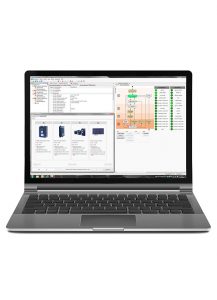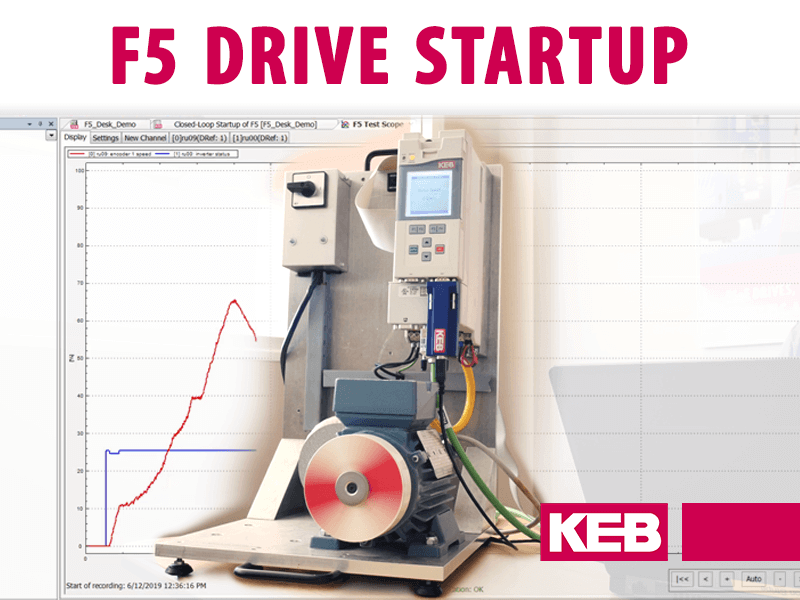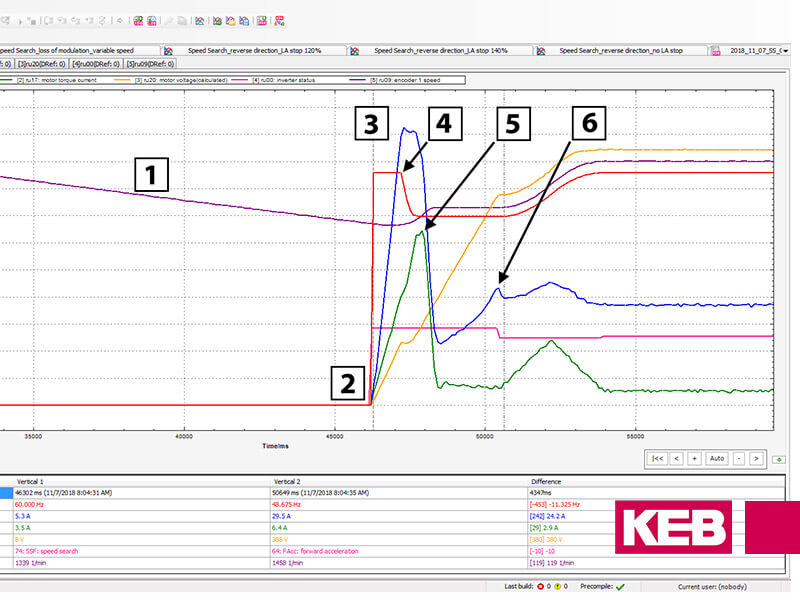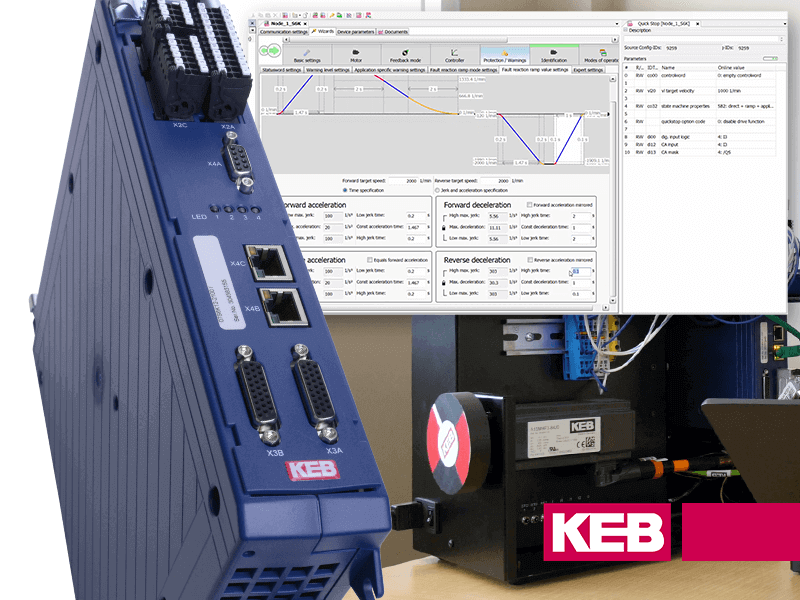How to Upload and Download KEB Drive Parameters
One of the more useful features of our drives is the ability to upload and download KEB drive parameters. You can do this using our COMBIVIS 6 automation software. KEB VFDs offer exceptional motor control with a vast amount of parameter options to fine-tune your application to run as smoothly and efficiently as possible. You can easily save parameter lists to a computer as a backup file or use a previously saved file to program a new or existing drive. The upload and download procedures embedded in this blog are also available in our COMBIVIS 6 Tutorials playlist on our KEB America YouTube channel.
Before You Begin
There are a few things to address before starting a KEB drive upload or download procedure. If you want to learn more about how to connect to a KEB device in more detail watch the tutorial video on this link: Combivis VFD Software
Cables to Connect the KEB Drive to a Computer
There are a few things you will need to connect your computer to a KEB device. You cannot use an off-the-shelf USB to serial cable to connect. See the part numbers for each type of cable in the list below:
- KEB USB-to-serial adapter: 0058060-0040
- RJ45 adapter: 00F50C0-0020
- Combivis cable (DIN 66019II – RS-232 cable) part number: 0058025-001D
- USB-to-serial adapter with FTDI chipset: 0000000-7938
Steps to Connect to a KEB Device
If you have never connected to a KEB device using our COMBIVIS software, watch this video tutorial. This will step you through the process of opening a new project and linking the KEB device to the software on your computer. If you have successfully connected to your KEB drive continue with the following steps below to perform a parameter list upload or download.
How to Upload KEB Drive Parameters
What Does it Mean to Perform an Upload?
Uploading KEB drive parameters means you take the parameters currently programmed on a VFD and using COMBIVIS 6 software installed on your connected computer, you upload the parameter list from the drive to your computer. You can then save the parameter list as a file on your computer in order to download it to another drive or to keep it as a backup file. Simply put, it’s saving the parameters on a VFD to a file on your computer.
Purpose of Saving a Parameter Upload File
The reasons to do a KEB drive upload include:
- To use to program other VFDs
- To send the file to a KEB representative for troubleshooting
- Have as a base file for a program change
- Use as a backup file in case unwanted changes are made
Watch the video below and find out how to perform a parameter upload.
How to Download KEB Drive Parameters
What Does it Mean to Perform a Download?
Downloading KEB drive parameters means you take the parameter file on your computer, and using COMBIVIS 6 software, you download the parameter list to your VFD. Simply put, it’s downloading a saved parameter list on your computer to program a drive.
Purpose of a Parameter Download
- You can program a KEB drive with a parameter file saved on a computer using COMBIVIS 6 software
- How many parameters can be changed?:
- All parameters in a drive
- A few dozen to a few thousand
- This file ensures the drive operates as the save file is designed
- How many parameters can be changed?:
Watch the video below and find out how to perform a parameter download.
This video tutorial goes through the steps to perform a KEB drive parameter download
Thank you for watching and reading this tutorial on how to perform a KEB drive parameter upload and download. We hope you find this useful in the field when swapping drives or saving a parameter list as a backup. Contact us if you have any questions or want to learn more about KEB’s full product portfolio.
Let's Work Together
Connect with us today to learn more about our industrial automation solutions—and how to commission them for your application.




